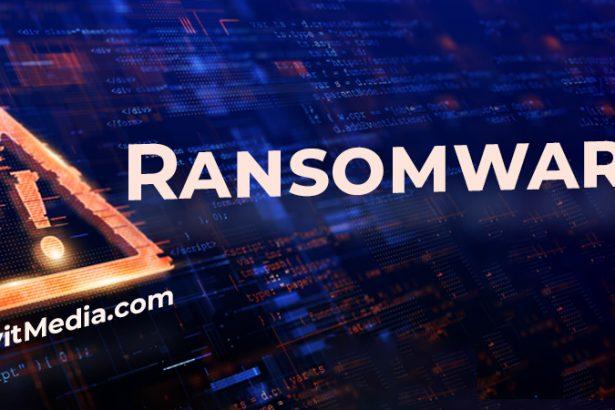The LulzDecryptor Ransomware is a file-locking Trojan that primarily targets Windows systems. This threat encrypts files on infected computers, rendering them inaccessible without decryption. However, its method of encryption and weaknesses allow for easier identification and decryption compared to more sophisticated ransomware variants.
Threat Overview
The LulzDecryptor Ransomware is considered a low-level threat due to its simple encryption routine. Unlike other ransomware strains that add unique extensions to encrypted files, this Trojan does not modify the file names. As a result, users may struggle to identify the infected files unless they attempt to open them.
The ransomware displays a pop-up message demanding payment in Bitcoin to decrypt the files, but the encryption used by the LulzDecryptor is weak, and victims can restore their files without paying the ransom.
Table: LulzDecryptor Ransomware Summary
| Category | Details |
|---|---|
| Threat Type | File-locking Trojan (Ransomware) |
| Encrypted File Extension | No extension change (files remain the same name) |
| Ransom Note File Name | Pop-up message (HTA file) with ransom demand |
| Associated Email | No known associated email addresses |
| Detection Names | LulzDecryptor, Trojan.LulzDecryptor |
| Symptoms of Infection | Inaccessible files (can’t open), pop-up ransom note |
| Damage | Files encrypted, potential system instability (falsely warned in ransom note) |
| Distribution Methods | Illicit downloads, unverified updates, infected email attachments, exploitative macros |
| Danger Level | Low to Medium (due to weak encryption and free decryption key availability) |
Download SpyHunter Now & Scan Your Computer For Free!
Remove this and any other malicious threats to your system by scanning your computer with SpyHunter now! It’s FREE!
Infection Symptoms
The primary symptom of an infection is the inability to open files. While the files retain their original names, they become unreadable due to encryption. Victims will notice the problem when attempting to open documents, images, or other media that appear to be unaffected.
Additionally, the ransomware will trigger a pop-up message (usually in the form of an HTA file) that demands a ransom payment in Bitcoin. The message also warns of potential system damage, though these claims are unfounded.
How to Remove LulzDecryptor Ransomware
While the LulzDecryptor Ransomware might initially seem threatening, it is relatively easy to remove with the right tools. The Trojan's weak encryption allows users to restore their files without paying the ransom.
- Use SpyHunter to Remove LulzDecryptor:
- Step 1: Download and install SpyHunter on an uninfected system if possible.
- Step 2: Open SpyHunter and run a complete system scan to detect the LulzDecryptor Ransomware.
- Step 3: Once the scan is complete, allow SpyHunter to remove any detected threats.
- Step 4: After the malware is removed, reboot your computer into safe mode and run another scan to ensure complete removal.
- Step 5: Use the free decryption key ‘4aEWaAMtxGnHPcvGnuxtEWYCPb5AxuC3ABcLRmz7AQZ2wdVpreduKK9C7LU7’ in the pop-up ransom note (if available) to decrypt your files.
- Manual Removal (if needed): If SpyHunter cannot remove the malware automatically, you may need to perform a manual removal. This involves:
- Booting the system into Safe Mode.
- Identifying and removing any malicious processes associated with the Trojan.
- Deleting infected files or restoring from backups.
Prevention Tips for Future Protection
Even though the LulzDecryptor Ransomware is not highly advanced, it is essential to take steps to avoid future infections from any malware, including more sophisticated ransomware strains.
- Avoid Illicit Downloads:
Always download software from official sources or trusted websites. Avoid using pirated software or unverified updates that may harbor malware. - Be Cautious of Email Attachments:
Do not open email attachments from unknown or suspicious sources. Phishing emails often contain ransomware payloads disguised as harmless files. - Update Software Regularly:
Ensure that your operating system and all installed software are up-to-date with the latest security patches. This reduces the risk of exploitation through known vulnerabilities. - Enable System Backups:
Regularly back up important files to an external drive or cloud service. This provides a recovery option in case of ransomware attacks. - Use Anti-malware Protection:
Install reliable anti-malware software like SpyHunter that can detect and block ransomware before it infects your system.
Conclusion
While the LulzDecryptor Ransomware is a relatively low-level threat, it still poses risks to Windows users who fail to take the necessary precautions. By being cautious with downloads, email attachments, and keeping your system up to date, you can greatly reduce the likelihood of infection. If infected, removal is straightforward with tools like SpyHunter, and free decryption is available for affected files.
Download SpyHunter Now & Scan Your Computer For Free!
Remove this and any other malicious threats to your system by scanning your computer with SpyHunter now! It's FREE!




